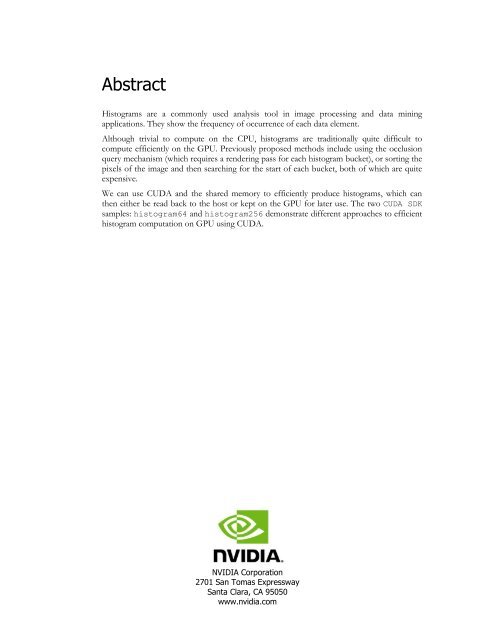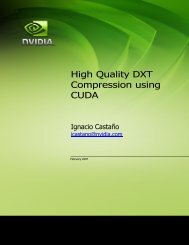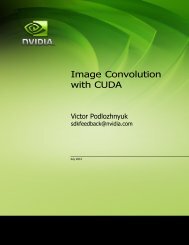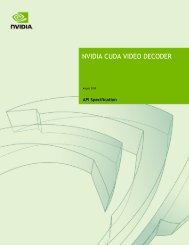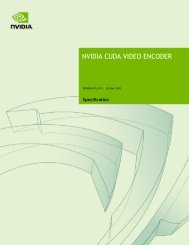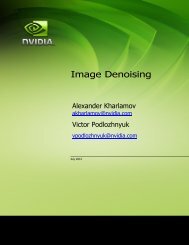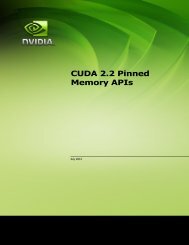Histogram calculation in CUDA
Whitepaper - nVIDIA CUDA Toolkit Documentation
Whitepaper - nVIDIA CUDA Toolkit Documentation
- No tags were found...
Create successful ePaper yourself
Turn your PDF publications into a flip-book with our unique Google optimized e-Paper software.
Abstract<br />
<strong>Histogram</strong>s are a commonly used analysis tool <strong>in</strong> image process<strong>in</strong>g and data m<strong>in</strong><strong>in</strong>g<br />
applications. They show the frequency of occurrence of each data element.<br />
Although trivial to compute on the CPU, histograms are traditionally quite difficult to<br />
compute efficiently on the GPU. Previously proposed methods <strong>in</strong>clude us<strong>in</strong>g the occlusion<br />
query mechanism (which requires a render<strong>in</strong>g pass for each histogram bucket), or sort<strong>in</strong>g the<br />
pixels of the image and then search<strong>in</strong>g for the start of each bucket, both of which are quite<br />
expensive.<br />
We can use <strong>CUDA</strong> and the shared memory to efficiently produce histograms, which can<br />
then either be read back to the host or kept on the GPU for later use. The two <strong>CUDA</strong> SDK<br />
samples: histogram64 and histogram256 demonstrate different approaches to efficient<br />
histogram computation on GPU us<strong>in</strong>g <strong>CUDA</strong>.<br />
NVIDIA Corporation<br />
2701 San Tomas Expressway<br />
Santa Clara, CA 95050<br />
www.nvidia.com


